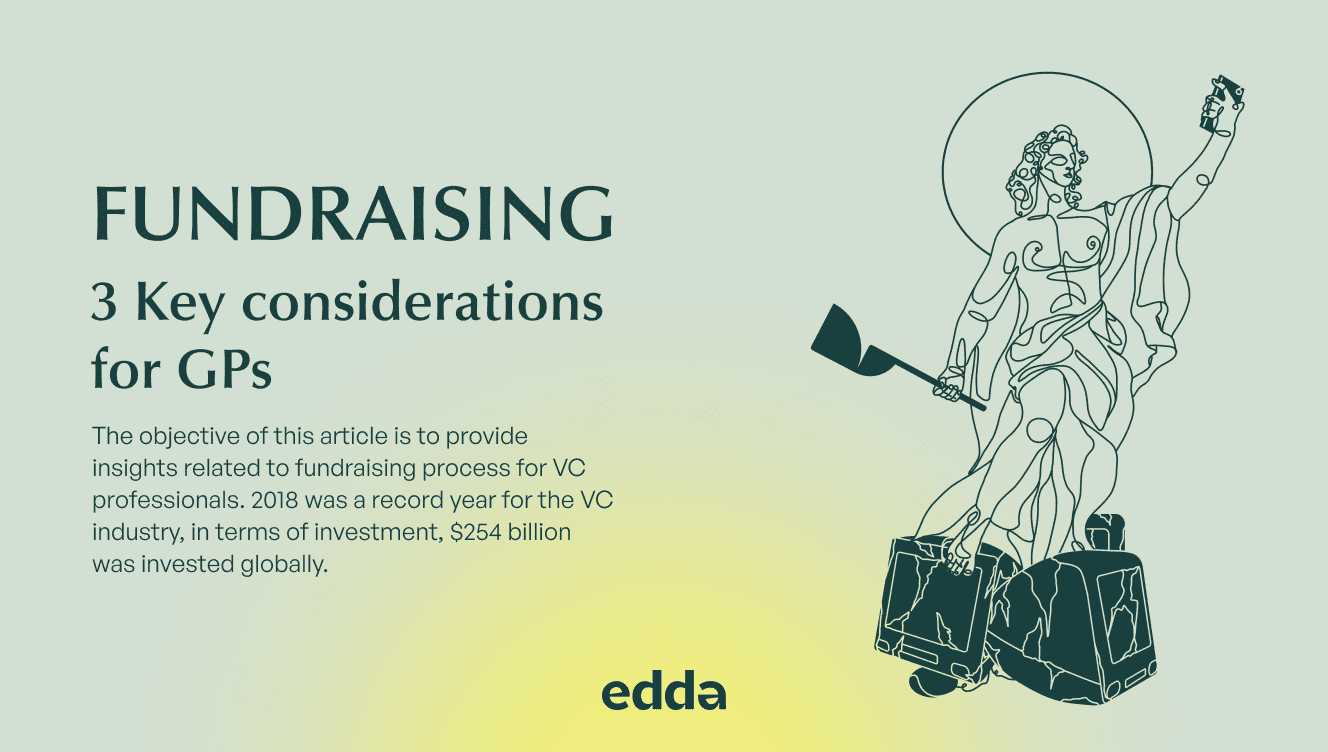The objective of this article is to provide insights related to fundraising process for VC professionals. 2018 was a record year for the VC industry, in terms of investment $254 billion was invested globally. By the end of third quarter of 2018, VCs in US and Europe had raised more than $ 40 billion. The median fund size in 2018 was $83.7 million which is phenomenal as the median fund size in 2014 was $34.7 million. Keeping in mind the growing numbers of VCs fundraising, I am going to focus on three key considerations a general partner or an aspiring general partner should have in mind before raising the next or the first fund.
When Fundraising – Prioritize LP selection based on your decision criteria
Typically, the LPs of VC funds consist of pension funds, endowment and foundations, insurance companies, family offices, high net worth individuals, fund of funds and corporate funds. However, each LP has different risk profile and liquidity needs. For instance, insurance companies always have an uncertainty associated with their cash outflows. Hence they tend to invest a major portion of their money into risk-less assets such as bonds. In contrast, private foundations typically allocate more than 40% of their assets into alternative asset classes (i.e. PE and VC). Since their short term cash requirements are not high.
Elizabeth Yin, former Partner at 500 startups suggests that you must talk to a lot of fund managers to get advice about LPs rather than devoting your time and energy to approach institutional investors. While establishing her own VC fund, she focused on closing the fund as fast as possible and qualifying investors with smaller check sizes ($25K then going beyond $300K). The reason she prioritized on speed was because SEC in US mandates that you cannot market your fund while raising it.
Hence, relationship building and transparency are important factors while talking to LPs and especially institutional LPs. For new fund managers, closing an institutional LP can take more efforts and time. Therefore, they have to spend more time building relationships with institutional LPs.
Edda tip: Use a clear process to track the progress of your partnership with LPs. Here’s one of the best practices to setup a process:
New opportunities
Initial allocation
Legal/AML
Final allocation
Standby
Differentiate yourself by selecting a unique dealflow strategy or industry expertise
There is a gigantic gamut of VC funds out there. So, when fundraising, you have to think about what is the unique value proposition you can provide. Your UVP needs to separate you from the rest. Do you already have a network with ecosystem builders or a network with established founders to source startups? Does your team have a unique industry expertise that is going to help you find the next unicorns? These are some questions you must think about deeply before you start putting together your fundraising investment strategy.
The figure below illustrates the common categories of expertise of GPs.
Harvard professor Paul Gompers in his 2007 study on specialist vs generalist approach of VCs concluded that specialists performed better than generalists in VC firms that focused on a particular domain. On the other hand, if a specialist is put to manage a generalist role, the performance of the specialist weakens.
Thomas Meyer and Pierre Yves Mathonet, in their book, Beyond the J curve state the factors LPs consider on qualitative basis while conducting fund due diligence. Overall the management team’s skills, motivation and stability account for 50% of the qualitative factors LPs consider.
Edda tip: Get help from key industry players that can provide you with quality dealflow. In order to make this kind of partnership work, you need to standardize this process. At Edda we develop specific submission forms in our dealflow management software that populate your dealflow automatically.

Design an infallible investment strategy with your LPs
Chris Douvos, Managing Partner at Venture Investment Associates, who is also an LP, had interesting insights regarding GPs pitching. Namely, he states that oftentimes GPs make a pitch to LPs saying that they have designed a new investment strategy. However, they are unaware of the fact that ten or more such strategies have already been pitched to them. So how do you go about designing your investment strategy? Besides the competency and expertise of GPs there are some set factors that contribute to investment strategy.
Factors that contribute to investment strategy
- The market size and growth opportunities– GPs must assess how big is the market they are going to target and the growth opportunities associated with it. Furthermore, what are the current trends and how will you be able to source the companies you want to invest in.
- Capital requirement and investment returns- Key aspects to note here is whether you will have enough capital to meet the demands of your investment as well as have funds for follow on investment. Secondly, how long will the investment cycle be and most importantly will your approach actually aid you in getting the expected returns?
- Risk Management- Just including a typical bunch of risks such as an act of God, currency risk, regulatory risk is not enough. As a GP you must think about the risks associated with your team and specific risks associated with your investment strategy. For example, if you are going with an investment strategy to invest in energy companies especially operating in emerging economies, then is there a regulatory or political risk that can prevent you from investing or that can tie your investment for a long time?
Edda tip: Involve your LPs in the investing process and share your dealflow with them. This is the most effective way to leverage their network, build transparency and engagement. Because we know how valuable this is for VC firms, we built a Portal into our deal flow management software where LPs can access dealflow companies. To make this process even more engaging, the LPs receive a monthly fully automated newsletter that redirects them to the Portal.

These are three broad factors that a GP must consider before raising a fund or going into the fundraising. In the upcoming articles, I will delve deeper into asset allocation strategies of different LPs. In addition, I will talk more about how different LPs conduct their fund due diligence.
If you are interested in knowing more about measuring the performance of a VC fund then click here or schedule a demo of our venture capital portfolio management software today.









